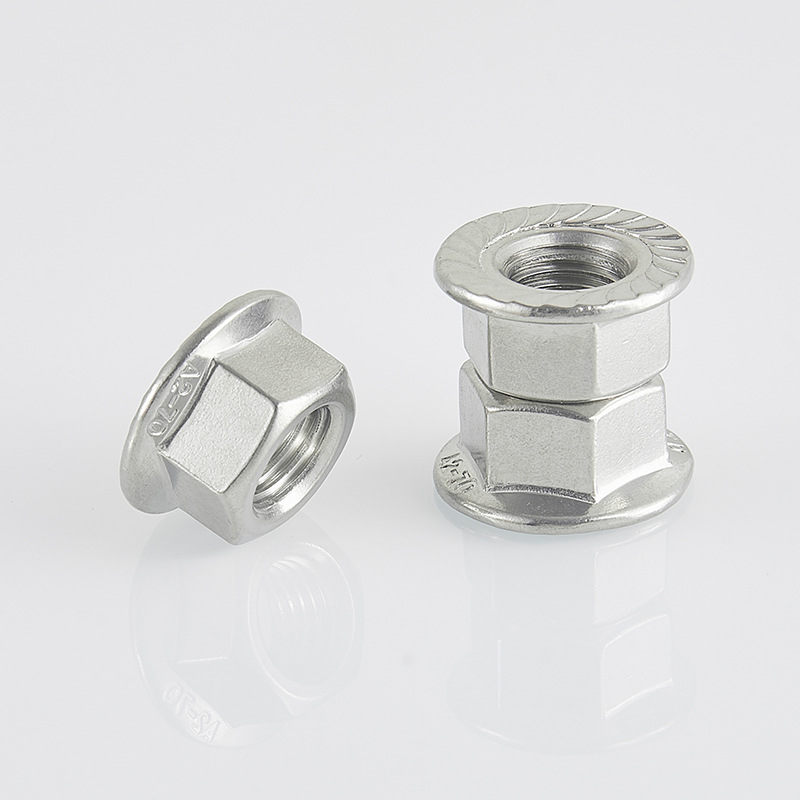

m12 x 1.5 flange nut
Nov . 11, 2024 12:21 Back to list
m12 x 1.5 flange nut
Understanding M12 x 1.5 Flange Nuts An Essential Component in Engineering
In the realm of mechanical engineering and construction, the M12 x 1.5 flange nut is a vital component that plays a crucial role in ensuring the stability and integrity of various structures. These nuts are commonly used in machine assemblies, automotive applications, and construction projects where secure fastening is essential. This article delves into the characteristics, applications, and advantages of M12 x 1.5 flange nuts, providing a comprehensive understanding of their significance in engineering.
What is an M12 x 1.5 Flange Nut?
The designation M12 x 1.5 refers to a metric flange nut with an M12 thread size and a 1.5 mm thread pitch. The M stands for metric, and the number indicates the nominal diameter of the bolt or screw that the nut is designed to fit, which in this case is 12 millimeters. The pitch, which is the distance between the threads, is specified at 1.5 millimeters.
Flange nuts are characterized by a wide, flat base that provides a larger surface area for contact with the material being fastened. This design helps to distribute the load more evenly, reducing the risk of the nut loosening over time due to vibrations or other stresses. Moreover, the flange eliminates the need for a separate washer, streamlining the assembly process.
Common Applications
M12 x 1.5 flange nuts are widely used in various industries, including automotive, construction, and machinery. In automotive applications, these nuts secure engine components, chassis parts, and suspension systems, where robust fastening is crucial for safety and performance.
In construction, M12 x 1.5 flange nuts are often employed in structural applications, such as connecting beams and columns, securing brackets, and anchoring fixtures. Their ability to provide a stable connection helps ensure the structural integrity of buildings and infrastructure.
In industrial machinery, these nuts are essential for assembling equipment and machines that must withstand significant operational stresses. The flange design enhances grip, helping to prevent loosening during operation, which is critical in high-vibration environments.
m12 x 1.5 flange nut

Advantages of M12 x 1.5 Flange Nuts
1. Load Distribution The broad base of the flange nut allows for better distribution of load, minimizing the risk of localized stress that can lead to failure. This feature is particularly important in applications where mechanical loads fluctuate.
2. Reduced Loosening Flange nuts are less prone to loosening than standard nuts due to their unique design. The flange creates additional friction against the surfaces of the materials being fastened, which helps resist movement caused by vibrations.
3. Versatility M12 x 1.5 flange nuts can be used in a variety of applications across different industries, making them a versatile choice for engineers and builders.
4. Simplified Assembly By combining the functions of a nut and a washer, these flange nuts simplify the assembly process, saving time and reducing the number of components required in a build.
5. Corrosion Resistance Many M12 x 1.5 flange nuts are manufactured from high-quality materials, including stainless steel and coated alloys, which enhance their resistance to corrosion and wear. This property is essential for applications exposed to harsh environments.
Conclusion
The M12 x 1.5 flange nut is a key component in engineering that offers numerous advantages, from load distribution to enhanced fastening security. Its applications span across various industries, highlighting its versatility and essential role in ensuring the durability and reliability of structures and machines. Understanding the characteristics and benefits of this type of nut not only allows engineers and builders to make informed choices in their projects but also contributes to the overall safety and performance of the applications where these components are employed. As industry standards continue to evolve, the role of M12 x 1.5 flange nuts will remain an integral part of mechanical design and assembly, underscoring the importance of precision in engineering practices.
Latest news
-
High-Strength Hot Dip Galvanized Bolts - Hebei Longze | Corrosion Resistance, Customization
NewsJul.30,2025
-
Hot Dip Galvanized Bolts-Hebei Longze|Corrosion Resistance&High Strength
NewsJul.30,2025
-
High-Strength Hot-Dip Galvanized Bolts-Hebei Longze|Corrosion Resistance&High Strength
NewsJul.30,2025
-
Hot Dip Galvanized Bolts-Hebei Longze|Corrosion Resistance&High Strength
NewsJul.30,2025
-
Hot Dip Galvanized Bolts - Hebei Longze | Corrosion Resistance, High Strength
NewsJul.30,2025
-
High-Strength Hot Dip Galvanized Bolts-Hebei Longze|Corrosion Resistance, Grade 8.8
NewsJul.30,2025

